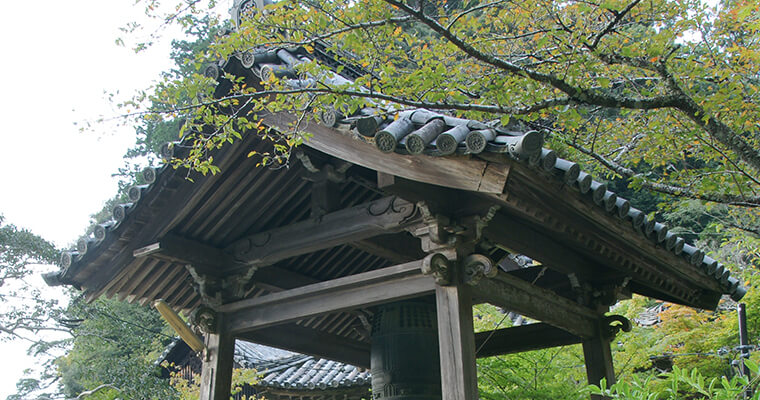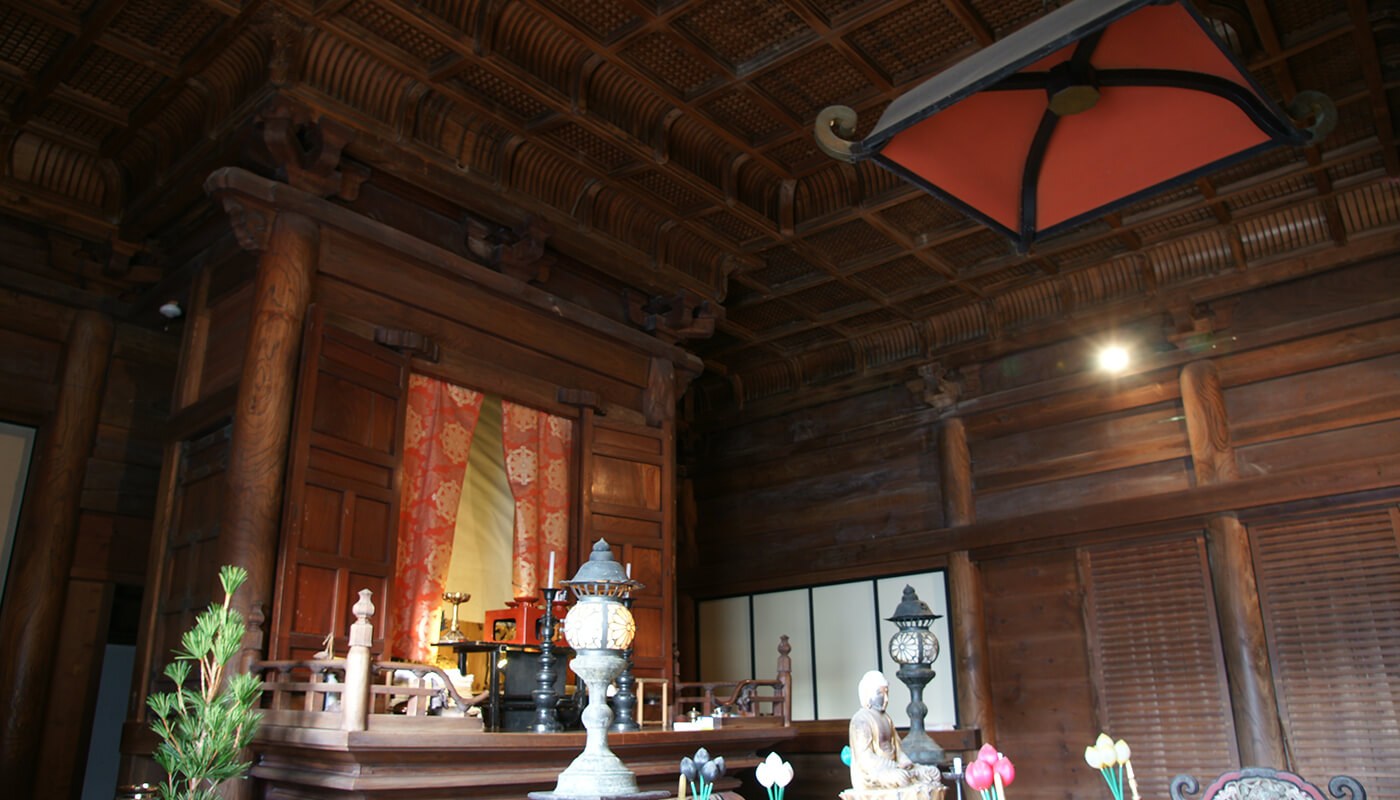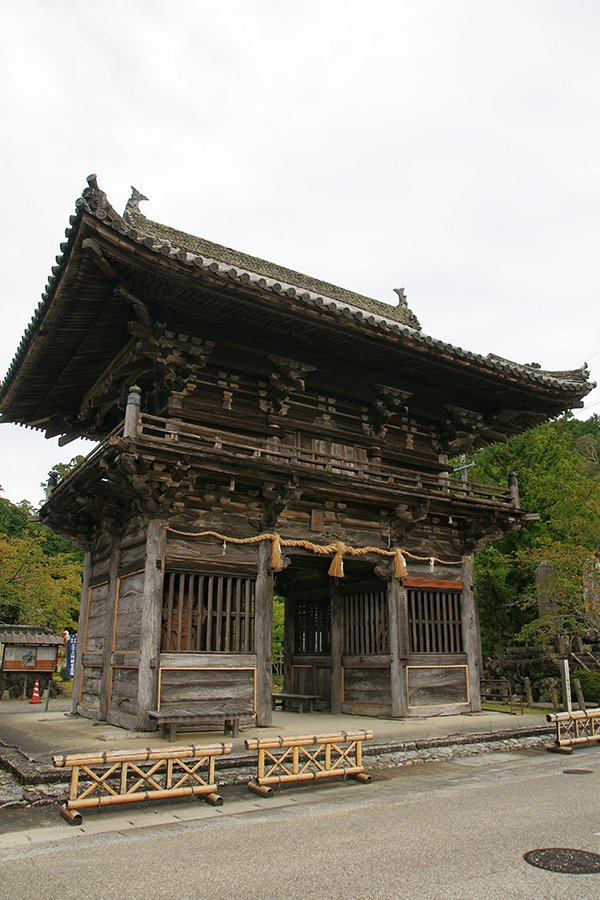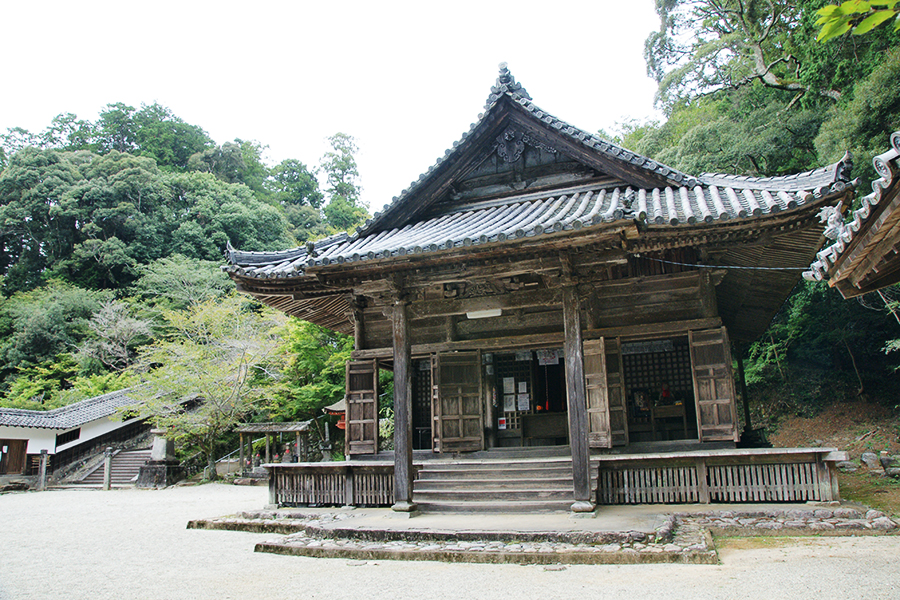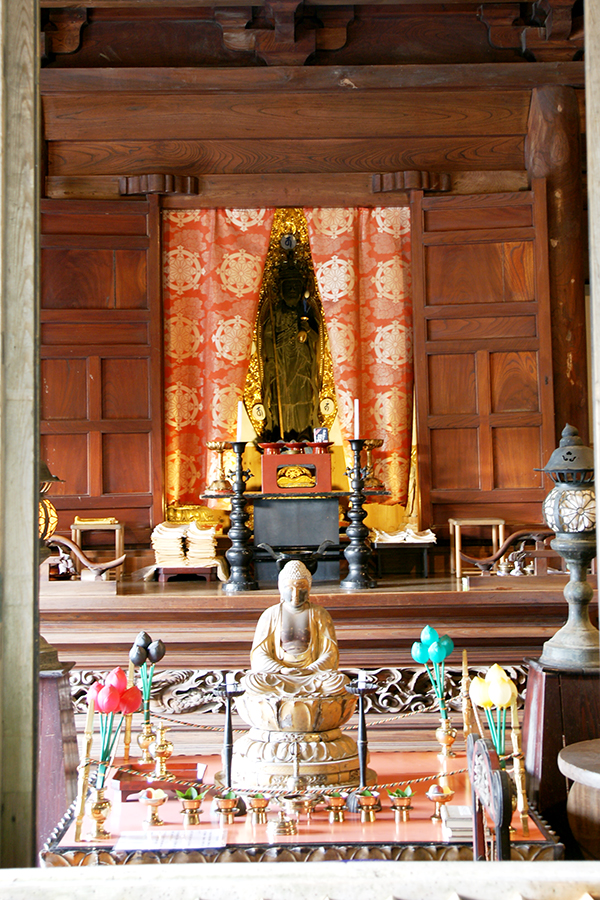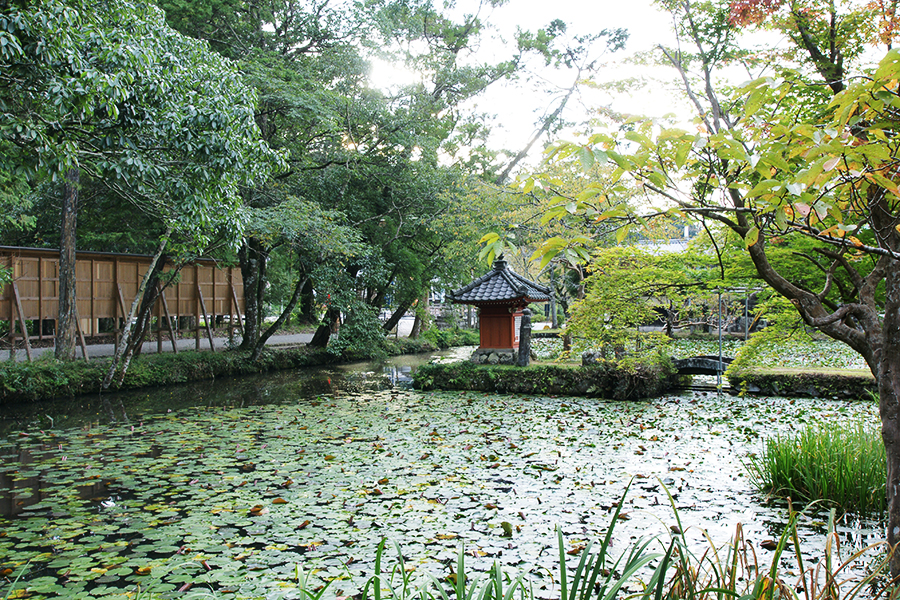Number 12Jingū-ji temple
History of the temple
Jingū-ji was founded in 774 by monk Gonzō (754-827), who built the temple by an order of Emperor Kōnin (709-782). At the beginning of the 9th Century (between 810 and 824) Kūkai (Kōbō Daishi, 774-835), the founder of Shingon sect, visited Jingū-ji after his pilgrimage to Ise Shrine. When he learned that the temple was founded by his teacher Gonzō, he decided to postpone the construction of a temple at Mount Kōya and instead chose to expand this temple complex. In 815 the seven-structured temple compound was finished.
Kūkai, 42 years old at the time, made a statue of himself and place it in Dashi Hall (Hall of Kūkai). Because the statue miraculously survived many military conflicts untouched, it became known as Oyakuyoke Daishi (Great teacher who expels bad luck) and is visited by many people who come to pray to get rid of bad luck.
Another statue which was also made by Kūkai is a gilt bronze statue of Fudō Myō-ō (Immovable Wisdom King) and it is placed inside Goma Hall (Hall for Goma/Homa fire ritual).
Jingū-ji has two more halls: Yakushi Hall – which enshrines a statue of Buddha Yakushi (Buddha of Medicine and Healing), and the Main Hall (also called Kannon Hall, rebuilt in 1684) which enshrines a statue of Jūichimen Kannon (Eleven-Faced Kannon) – the main statue of the temple since the time of its founding.
Jingū-ji temple was damaged several times by fires, but each time it was repaired. Two main reconstruction works were done in 16th and 17th Century. The first conducted by Ryōshin was done between 1596 and 1615, the second conducted by Ryōhan was done between 1684 and 1688. Thanks to efforts of these two monks many buildings within temple’s precinct survived to our times.
A natural mineral hot spring called Daishiyū (Daishi Hot Spring) is also close to the temple. According to the legend, it is also one more place where Kūkai used to practice.
Jingū-ji temple, which is also called Niu Daishi, is very popular especially among women. Since ancient times Mount Kōya would not allow women to enter the sacred mountain. Instead many of them would come on a pilgrimage to this temple, hence the nickname: Mount Kōya for Women.

Outline
-
Honorific name
Niusan
-
Temple's name
Jingū-ji
-
Sect
Shingon Yamashina branch
-
Religious service
Jūichimen Kannon
(Eleven-Faced Kannon)
